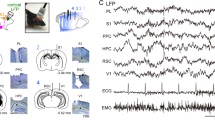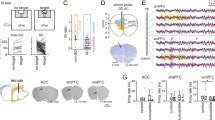Abstract
THE relatively great reactivity of highly emotional animals must be correlated with neural function, but there seem to have been no previous reports of differential effects of stress on specific neurotransmitters in the brains of animals which differ in excitability. We have found that restraint stress can cause a greater elevation of brain catecholamines and serotonin in mice made hyperexcitable by 8–12 weeks of isolation than in their less excitable littermates housed in groups. This differential elevation of brain amines occurs in spite of the slower turnover of these neurotransmitters in isolated mice in normal non-stressed conditions1–3,6. Furthermore, after inhibition of catecholamine biosynthesis by α-methyltyrosine, stress facilitated the depletion of norepinephrine and dopamine in mice that had been kept isolated, but retarded their depletion in mice that had been housed in groups. It seems that restraint stress, which presumably imposes an increased demand for brain catecholamines and serotonin to maintain neurotransmission, rapidly activates a mechanism to conserve these amines and activates it to different degrees in mice which differ in emotional reactivity.
This is a preview of subscription content, access via your institution
Access options
Subscribe to this journal
Receive 51 print issues and online access
$199.00 per year
only $3.90 per issue
Buy this article
- Purchase on Springer Link
- Instant access to full article PDF
Prices may be subject to local taxes which are calculated during checkout
Similar content being viewed by others
References
Welch, A. S., and Welch, B. L., Biochem. Pharmacol. (in the press).
Welch, B. L., and Welch, A. S., J. Pharm. Pharmacol., 20, 244 (1968).
Welch, B. L., Aggression and Defense: Neural Mechanisms and Social Patterns (edit. by Clemente, C. D., and Lindsley, D. B.), 150 (Univ. Calif. Press, Los Angeles, 1967).
Pirch, J. H., and Rech, R. H., Intern. J. Neuropharmacol., 7 (in the press).
Pirch, J. H., and Rech, R. H., Life Sci., 7, 173 (1968).
Garattini, S., Giacalone, E., and Valzelli, L., J. Pharm. Pharmacol., 19, 338 (1967).
Glowinski, J., and Baldessarini, R. J., Pharmacol. Rev., 18, 1201 (1966).
Norberg, K.-Å., Brain Res., 5, 125 (1967).
Anden, N. E., Corrodi, H., Dahlströhm, A., Fuxe, K., and Hökfelt, T., Life Sci., 5, 561 (1966).
Gordon, R., Spector, S., Sjoerdsma, A., and Udenfriend, S., J. Pharmacol. Exp. Therap., 153, 440 (1966).
Bliss, E. L., and Zwanziger, J., J. Psychiat. Res., 4, 189 (1966).
Maynert, E. W., and Levi, R., J. Pharmacol. Exp. Therap., 143, 90 (1964).
Toh, C. C., J. Physiol., 151, 410 (1960).
Paulsen, E. C., and Hess, S. M., J. Neurochem., 10, 453 (1963).
Welch, A. S., and Welch, B. L., J. Pharm. Pharmacol., 19, 841 (1967).
Corrodi, H., Fuxe, K., and Hökfelt, T., Life Sci., 7, 107 (1968).
Welch, B. L., and Welch, A. S., Fed. Proc., 27, 711 (1968).
Hillarp, N-Å., Fuxe, K., and Dahlström, A., Pharmacol. Rev., 18, 727 (1966).
Welch, B. L., Medical Aspects of Stress in the Military Climate (edit. by Rioch, D. McK.), 39 (US Govt. Print. Off., Washington, 1964).
Author information
Authors and Affiliations
Rights and permissions
About this article
Cite this article
WELCH, B., WELCH, A. Differential Activation by Restraint Stress of a Mechanism to conserve Brain Catecholamines and Serotonin in Mice differing in Excitability. Nature 218, 575–577 (1968). https://doi.org/10.1038/218575a0
Received:
Published:
Issue Date:
DOI: https://doi.org/10.1038/218575a0
This article is cited by
-
Behavioral interactions of fluoxetine and other 5-hydroxytryptamine uptake inhibitors with ethanol in tests of anxiety, locomotion and exploration
Psychopharmacology (1988)
-
Streß, Emotion und Hypertonie: Die integrative Rolle des Zentralnervensystems
Klinische Wochenschrift (1981)
-
Restraint‐induced stress ulcer. I. Hypothalamic, urinary, and adrenal biochemical studies
World Journal of Surgery (1980)
-
Stress-induced depression of motor activity correlates with regional changes in brain norepinephrine but not in dopamine
Neurochemical Research (1980)
-
Effect of electric shock on serotonin (5 HT) content in different organs of rat
Experientia (1977)
Comments
By submitting a comment you agree to abide by our Terms and Community Guidelines. If you find something abusive or that does not comply with our terms or guidelines please flag it as inappropriate.



